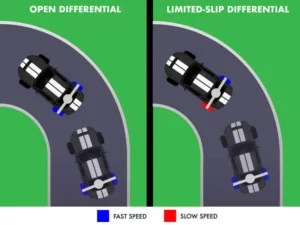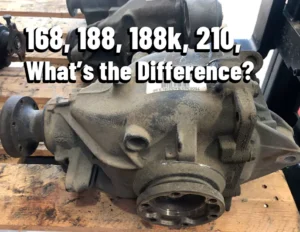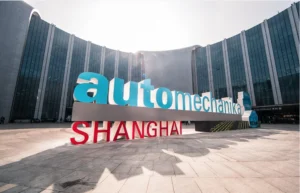A standard open differential allows the two rear wheels to rotate at different speeds, which is necessary when turning, as the outer wheel must travel farther than the inner wheel. However, under asymmetric traction conditions—such as when one wheel is on ice or lifted off the ground—an open differential will send most of the torque to the path of least resistance, rendering the vehicle immobile.
Locking differentials can be classified into three primary categories: manual lockers, automatic lockers, and electronic lockers.
Manual lockers, such as air- or cable-actuated systems, require the driver to engage the lock manually, typically via a dashboard switch or lever. These systems are favored in off-road and expedition applications due to their precision and driver control.
Automatic lockers, like the Detroit Locker, engage and disengage based on internal mechanisms triggered by torque differentials. While they offer hands-free operation, their engagement can be abrupt, which may affect vehicle handling on paved roads.
Electronic lockers are typically integrated into modern OEM drivetrains and are activated electronically by the driver. They offer the advantage of seamless integration with modern vehicle electronics, including ABS and stability control systems, and provide a user-friendly interface.
The effectiveness of a locking rear differential is most apparent in off-road conditions. When a vehicle encounters loose surfaces, deep mud, snow, or rock obstacles, torque symmetry between both rear wheels can make the difference between progress and being stranded. Locking differentials are also indispensable in agricultural, forestry, and utility fleet operations, where vehicles frequently traverse uneven and unpredictable terrain.
Additionally, in towing scenarios—especially with rear-wheel-drive vehicles—a locker helps distribute torque evenly, minimizing wheel spin and increasing traction when launching or climbing under load.
On the other hand, for everyday driving on dry, paved surfaces, the benefits of a locking differential are largely redundant. In fact, automatic lockers may introduce drivability concerns, such as jerky cornering behavior or increased noise and vibration. Tire wear can also accelerate if the locker is engaged in high-traction environments for prolonged periods.
The financial aspect of installing a locking differential must be taken into account. High-quality aftermarket systems, such as ARB or Eaton lockers, can be expensive, especially when factoring in labor for installation and the need for auxiliary systems like onboard air compressors. Furthermore, added mechanical complexity may necessitate more frequent maintenance or inspection, particularly in severe duty cycles.
OEM-equipped electronic lockers are often more cost-efficient for consumers who purchase them as part of a vehicle package, but retrofitting such systems post-sale may not be economically viable.
A locking rear differential is an advanced traction-enhancing mechanism that provides undeniable benefits under specific conditions. For off-road professionals, utility fleets, and anyone who regularly encounters low-traction environments, the value of a locking diff is both practical and measurable. However, for typical urban or highway drivers, the advantages may not justify the cost or potential handling trade-offs.
Ultimately, the worth of a locking rear differential is determined not by its capabilities alone, but by the context in which the vehicle operates. When used appropriately, it transforms a vehicle’s ability to maintain mobility under the most demanding conditions—making it, without question, a critical tool in the right hands.
At XJX Parts, we specialize in manufacturing high-performance locking differentials, combining precision engineering with proven durability. Whether you’re building off-road machines, equipping commercial fleets, or supplying performance upgrades, our factory-direct solutions are built to meet professional demands.
Contact us today to discuss your specific requirements or request a quote.
Let’s build better traction, together.




